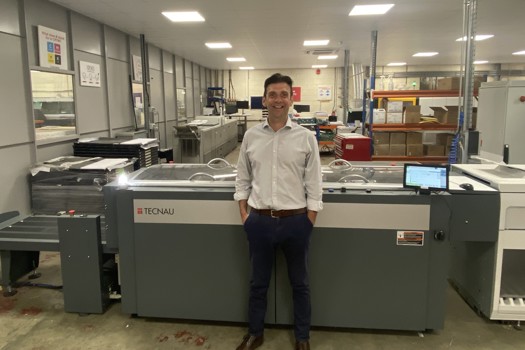However, the confidence outlook has stepped up and orders and output are expected to grow more strongly, the federation said.
While output and orders growth didn’t quite match the expectations for Q1, the industry has now had two consecutive quarters of growth, which is more than it has seen since 2022. Additionally, printing industry activity is expected to experience a stronger pick-up in Q2.
The BPIF said though that the survey was still picking up mixed signals on the state of trade, and it had received plenty of opinions on a number of issues companies are currently experiencing.
On the general economy and the environment companies are operating in, inflation is coming down, just not as quickly as might have been expected; interest rates are staying high – a costly annoyance to those repaying government Covid loans; and business rates are critically high for some companies.
Perhaps the most voiced annoyance though, according to the BPIF, was with the increase to the National Living Wage.
BPIF economist Kyle Jardine said that companies do not wish to obstruct a fair wage being paid and “in fact, many can benefit from having an open and transparent annual wage increase”.
“However, the knock-on effect on maintaining wage differentials throughout the various skills employed can easily double budgeted pay rises. There can also be difficulties created in recruiting, and skill progression within companies, as a result of significant increases in minimum wages catching up with more skilled occupations.”
He added: “Despite these issues being raised – companies in the printing and printed packaging industry are working hard to maintain cashflow and profit levels. Controlling costs, productivity gains through capital investment, and diversification have all been key strategies companies are pursuing to ensure their survival.”
On sustainability, 70% of respondents reported that they are measuring their carbon emissions (50% for more than 12 months, and a further 20% for less than 12 months), up from 56% in October and 38% in April last year. That now leaves 29% not yet measuring their emissions, and a further 1% of respondents that weren’t sure if their company was measuring emissions or not.
The most popular area of attention for sustainability related investments was waste reduction, selected by 68% of respondents.
BPIF CEO Charles Jarrold said: “Printing Outlook plays a crucial role in monitoring what is happening in our industry; we can more clearly see how the importance of sustainability is being accepted and acted upon.
“When we look at emissions measurement, it is promising to see that, in the last year, there has been a noticeable progression from companies starting measuring, through measuring just Scope 1 and 2, to incorporating Scope 3.
“Of course, measuring emissions is only a start; over four-fifths of respondents (82%) are working to reduce their carbon footprint. In the coming months we expect to see more companies setting emission reduction targets, and getting their targets validated by organisations like the Science Based Targets Initiative (SBTi).
“Finally, and as we eagerly approach Drupa, Printing Outlook suggests that the industry is generally more positive, which sets the scene for a really excellent expo for attendees and exhibitors, particularly as the new Q2 report shows that printing companies are interested in capital investment – especially if it can help boost productivity.”
The report also found that concern over sales levels in the industry strengthened to make it the new top business concern for printing companies once more.
Labour costs remained the most prominent costs concern for companies, but there were signs that pressure was building for other cost increases, with more companies starting to see a return of paper price increases.
Finally, a majority of printing companies were able to hold their margins steady in Q1, but margins remain under increased pressure, on balance, as the cost increase and price reduction squeeze is maintained.
The survey was carried out during 2-22 April 2024 and received responses from 111 companies employing 8,951 people with a combined turnover of £1.5bn.









